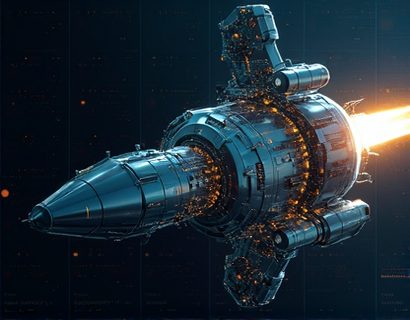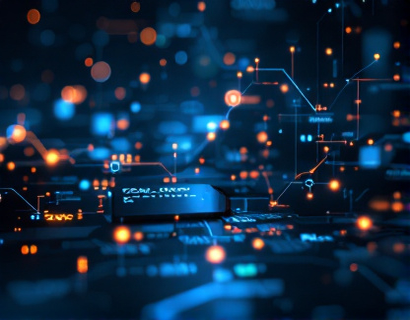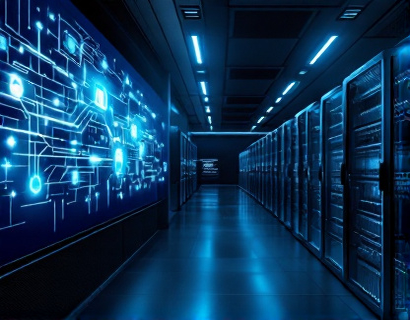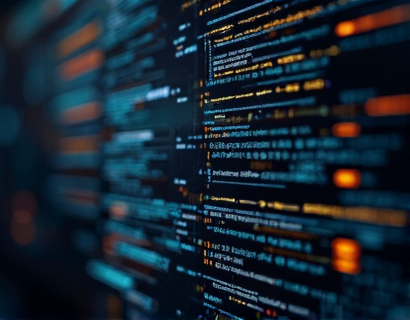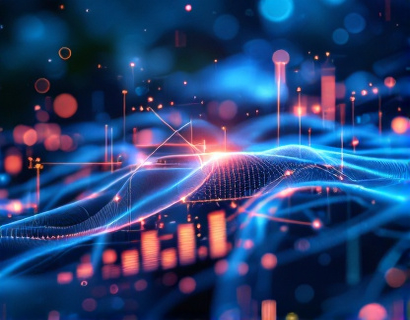Navigating the Ucosystem: A Beginner's Guide to Understanding Interconnected Complexity and Its Key Components
The concept of the Ucosystem represents a sophisticated network of interconnected systems, processes, and entities that work together to create a dynamic and complex environment. For individuals new to this idea, understanding the Ucosystem can seem daunting due to its intricate nature and the vast array of components involved. This guide aims to demystify the Ucosystem, breaking down its key components and offering practical insights to help you navigate this complex landscape effectively.
To begin, it's essential to grasp the fundamental idea behind the Ucosystem. At its core, the Ucosystem is a term used to describe a network of interconnected systems, where each system influences and interacts with others in various ways. These systems can range from technological platforms and social networks to economic markets and ecological environments. The term "Ucosystem" combines the ideas of interconnectedness and ecosystem, emphasizing the interdependent relationships within and between these systems.
One of the primary challenges in understanding the Ucosystem is recognizing the multitude of components that make it up. These components can be broadly categorized into four main types: nodes, links, agents, and the environment. Each of these elements plays a crucial role in the functioning and evolution of the Ucosystem.
Nodes
Nodes are the individual points or entities within the Ucosystem. They can be anything from a single user on a social media platform to a specific company in an economic network. Nodes are the building blocks of the Ucosystem, and their properties and behaviors significantly influence the overall system. Understanding the nature of nodes is crucial because they are the primary units through which information, resources, and influence flow.
For example, in a social media Ucosystem, a node could be a user account. The behavior of this node, such as posting content or engaging with others, affects the broader network. Similarly, in an economic Ucosystem, a node might represent a small business, and its actions, like producing goods or hiring employees, impact the market dynamics.
Links
Links, on the other hand, represent the connections or relationships between nodes. These links can be direct or indirect and can vary in strength and type. In the context of the Ucosystem, links are the pathways through which nodes interact and influence each other. The structure and density of these links determine the flow of information and resources within the system.
Consider a technological Ucosystem, where links could be API integrations between different software applications. The strength and number of these links affect how seamlessly data and functionalities are shared among the applications. In a social Ucosystem, links might represent friendships or follow relationships, influencing how information spreads and communities form.
Agents
Agents are the entities that operate within the Ucosystem, making decisions and taking actions based on their goals and capabilities. Agents can be individuals, organizations, or even algorithms. Their behaviors and interactions drive the dynamics of the Ucosystem, leading to emergent properties that are not predictable from the behavior of individual nodes or links alone.
In an economic Ucosystem, agents could be consumers and producers. Consumers make purchasing decisions based on their preferences and budget constraints, while producers decide on production levels based on market demand and costs. The interactions between these agents create market trends and economic cycles.
In a technological Ucosystem, agents might be users interacting with AI-driven services. The decisions made by these agents, such as which features to use or how to provide feedback, influence the development and evolution of the technology.
Environment
The environment encompasses the external conditions and factors that affect the Ucosystem. This includes physical, social, economic, and technological contexts that shape the behavior of nodes, links, and agents. The environment sets the boundaries and constraints within which the Ucosystem operates, influencing its stability, resilience, and adaptability.
For instance, in a social Ucosystem, the cultural and legal environment plays a significant role in shaping user behavior and platform design. In a technological Ucosystem, the regulatory environment, including data privacy laws and cybersecurity standards, impacts how technologies are developed and deployed.
Interdependencies and Emergent Properties
Understanding the interdependencies between nodes, links, agents, and the environment is crucial for navigating the Ucosystem. These components do not operate in isolation; instead, they are deeply interconnected, leading to emergent properties that arise from the complex interactions within the system.
Emergent properties are characteristics of the Ucosystem that cannot be predicted or fully explained by examining the individual components alone. For example, the stability of a financial market is an emergent property that results from the interactions of countless agents, links, and nodes within the economic Ucosystem. Similarly, the spread of information on a social media platform is an emergent phenomenon driven by the behavior of users and the structure of connections between them.
Navigating the Ucosystem: Practical Insights
Given the complexity of the Ucosystem, here are some practical insights to help you navigate and understand its components and dynamics:
- Identify Key Nodes: Start by identifying the key nodes within the Ucosystem you are interested in. These could be influential users, major companies, or central technologies. Understanding their roles and behaviors can provide insights into the overall system.
- Map the Links: Examine the links between nodes to understand the flow of information and resources. Look for strong and weak connections, as well as any bottlenecks or critical points that could impact the system's stability.
- Analyze Agent Behaviors: Consider the motivations and capabilities of the agents within the Ucosystem. Understanding their decision-making processes and interactions can help predict system dynamics and potential outcomes.
- Assess the Environment: Evaluate the external factors that influence the Ucosystem. This includes regulatory frameworks, technological advancements, and social trends. Being aware of these factors can help you anticipate changes and adapt accordingly.
- Embrace Complexity: Recognize that the Ucosystem is inherently complex and dynamic. Embrace this complexity rather than trying to simplify it artificially. Use tools and methods that can handle and analyze complex data, such as network analysis and system dynamics modeling.
- Iterate and Adapt: Navigating the Ucosystem is an ongoing process. Continuously monitor changes, learn from feedback, and adapt your strategies as needed. Flexibility and resilience are key to thriving in a complex environment.
By following these practical insights, you can develop a deeper understanding of the Ucosystem and its components. This knowledge will enable you to navigate the interconnected complexity more effectively, making informed decisions and leveraging the benefits of the Ucosystem in various contexts.
In conclusion, the Ucosystem is a powerful framework for understanding the intricate web of interactions that shape our world. By breaking down its key components—nodes, links, agents, and the environment—and recognizing the emergent properties that arise from their interactions, you can better navigate and engage with this complex landscape. Embrace the challenge of complexity, and you will find that the Ucosystem offers vast opportunities for innovation, collaboration, and growth.





















